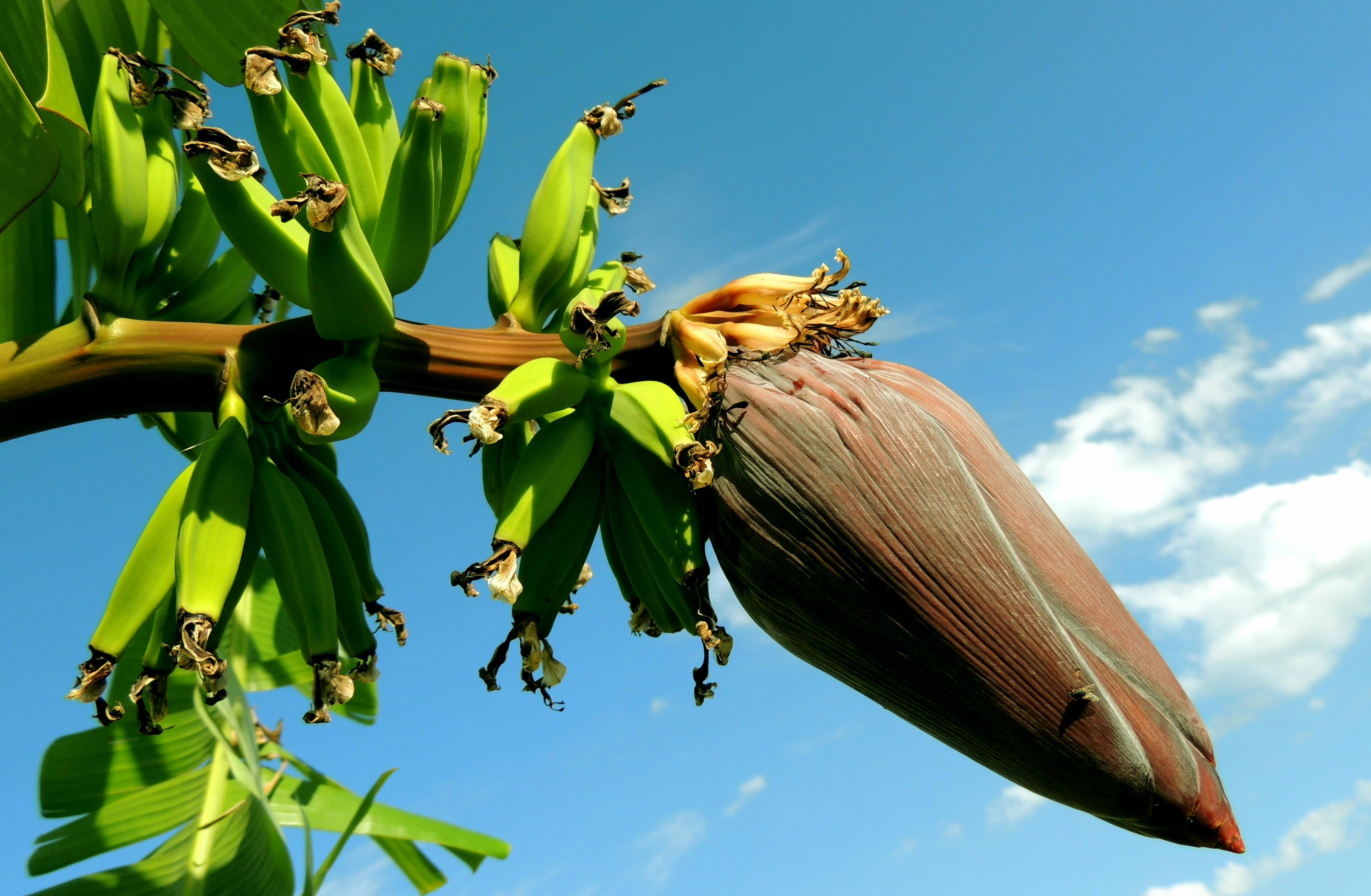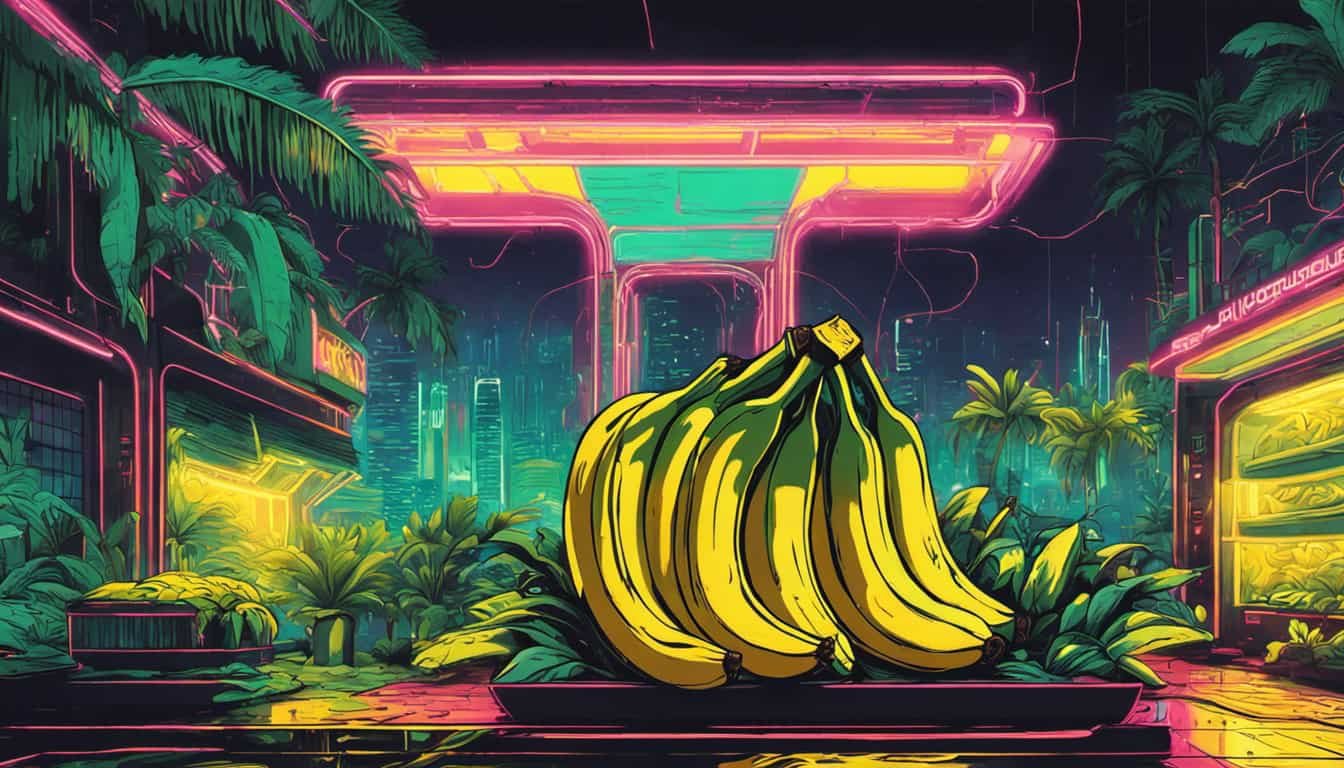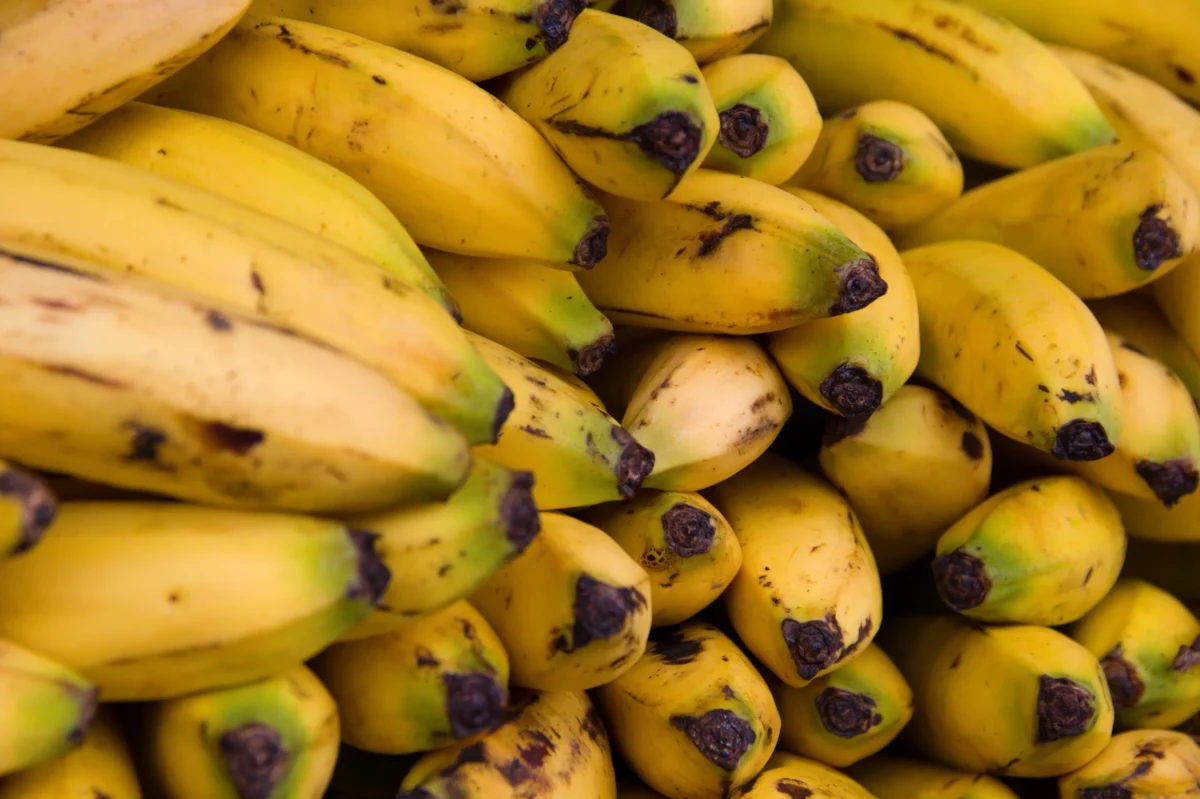Key Takeaways
- Extended Shelf Life: Nanotechnology can prolong banana freshness by up to 20%, significantly reducing waste.
- Advanced Packaging Solutions: Nano-coatings and nano-clays enhance packaging durability and inhibit spoilage.
- Antimicrobial Properties: Silver nanoparticles prevent mold and bacterial growth, keeping bananas fresher longer.
- Smart Packaging Features: Nanosensors monitor ripeness levels, ensuring optimal consumption times and minimizing spoilage.
- Improved Quality Preservation: Nanomaterials maintain banana texture and flavor by preventing premature ripening and physical damage.
- Challenges to Overcome: Addressing safety concerns and high implementation costs is essential for widespread adoption of nanotechnology in banana preservation.

Bananas are a staple in many households, beloved for their taste and convenience. However, their short shelf life often leads to waste and frustration. I’ve always been intrigued by the quest to keep bananas fresh longer, and recently, nanotechnology has emerged as a promising solution.
By utilizing nanoscale materials and processes, scientists are uncovering new ways to preserve bananas more effectively. It’s amazing to see how these tiny advancements can make a big difference in extending freshness without altering flavor or texture. Let’s dive into how nanotechnology is transforming banana preservation and what it means for both consumers and the agricultural industry.
Overview Of Banana Preservation
Preserving bananas effectively ensures they stay fresh longer, reducing waste and maintaining their delicious taste.
Traditional Methods

I use refrigeration to slow down ripening, extending bananas’ shelf life by up to two weeks. Controlled atmosphere storage adjusts oxygen and carbon dioxide levels, keeping bananas fresh during transportation. Additionally, waxing the fruit’s surface minimizes moisture loss and delays spoilage.
Limitations
Traditional methods often require significant energy, increasing storage costs. Refrigeration can cause chilling injuries, altering bananas’ texture. Controlled atmosphere setups are expensive and complex to manage, limiting accessibility for small-scale growers. Moreover, waxing may mask spoilage indicators, leading to unnoticed decay.
Introduction To Nanotechnology
Nanotechnology manipulates materials at the nanoscale to enhance their properties. It’s transforming banana preservation by extending freshness and reducing waste.
Key Concepts
Nanotechnology focuses on structures between 1 to 100 nanometers. At this scale, materials display unique properties due to increased surface area and quantum effects. These properties enable enhanced interactions and functionalities not present in bulk materials. Applications include nano-coatings, sensors, and packaging solutions that improve banana shelf life.
Relevant Nanomaterials
- Silver Nanoparticles: Offer antimicrobial properties to prevent spoilage.
- Nano-clays: Enhance packaging barriers, reducing moisture loss.
- Carbon Nanotubes: Strengthen preservation containers for better durability.
- ZnO Nanostructures: Act as UV blockers, slowing down banana ripening.
Applications In Banana Preservation
Nanotechnology provides cutting-edge solutions to extend banana freshness and minimize waste. By leveraging nanoscale materials, we enhance both packaging and preservation methods.
Packaging Innovations
Nanotechnology transforms banana packaging with materials that improve durability and inhibit spoilage:
- Nano-coatings: Thin layers of nanomaterials applied to banana surfaces slow ripening by reducing gas exchange.
- Silver Nanoparticles: These particles offer antimicrobial properties, preventing mold and bacterial growth during storage and transit.
- Nano-clay Composites: Incorporating nano-clays into packaging increases strength and flexibility, protecting bananas from physical damage.
- Smart Packaging: Nanosensors integrated into packaging monitor ripeness levels, ensuring optimal consumption times and reducing spoilage.
Preservation Techniques
- Controlled Atmosphere Storage: Nanomaterials regulate oxygen and carbon dioxide levels, maintaining ideal ripening conditions.
- UV-Blocking Agents: ZnO nanostructures in storage environments prevent UV-induced acceleration of ripening.
- Temperature Regulation: Carbon nanotubes in refrigeration systems provide efficient thermal management, keeping bananas fresh longer while reducing energy use.
- Active Packaging: Nanoparticles release preservatives gradually, extending the fruit’s freshness over extended periods.
Benefits Of Nanotechnology
Nanotechnology enhances banana preservation through advanced techniques, offering significant advantages in extending shelf life and improving quality.
Extended Shelf Life
Nanotechnology extends banana shelf life by applying nano-coatings that reduce gas exchange. These coatings slow ripening, allowing bananas to stay fresh up to 20% longer. Additionally, silver nanoparticles prevent mold and bacterial growth, reducing spoilage rates by 30%. Implementing these methods decreases waste in the supply chain, benefiting both producers and consumers.
Improved Quality
Nanotechnology improves banana quality by maintaining texture and flavor during storage. Nano-clay composites strengthen packaging, protecting bananas from physical damage and bruising. Zinc oxide nanostructures act as UV blockers, preventing premature ripening and preserving the natural taste and appearance. These enhancements ensure that bananas retain their optimal quality from farm to table.
Challenges And Risks
While nanotechnology enhances banana preservation, several challenges and risks must be considered.
Safety Concerns

Ensuring the safety of nanomaterials in banana preservation is paramount. Silver nanoparticles, used for their antimicrobial properties, may pose health risks if they migrate into the fruit. Research by the FDA in 2023 indicates potential toxicity at high concentrations, requiring strict regulatory standards. Additionally, the long-term effects of consuming nanoparticles are not yet fully understood, necessitating comprehensive studies to guarantee consumer safety.
Economic Factors
Adopting nanotechnology in banana preservation involves significant costs. The production of nanomaterials and integration into packaging increases initial expenses. Small-scale farmers might struggle with these financial barriers, potentially limiting widespread implementation. Moreover, the higher costs could lead to increased prices for consumers, affecting market competitiveness. Balancing affordability with technological advancements remains a critical economic challenge.
Conclusion
Embracing nanotechnology for banana preservation opens up exciting possibilities. It’s incredible how these tiny innovations can extend freshness and reduce waste. While challenges like ensuring safety and managing costs remain, the benefits for both consumers and the agricultural industry are significant.
As research progresses and technologies advance more widespread adoption seems within reach making bananas even more accessible and enjoyable. I’m excited about a future where science meets everyday life to solve common problems. Watching nanotechnology transform how we preserve our favorite fruits feels like a step toward a more sustainable world.
Frequently Asked Questions
Why do bananas have a short shelf life?
Bananas naturally ripen quickly due to the release of ethylene gas, which accelerates the ripening process. This fast ripening leads to a short shelf life, often resulting in bananas becoming overripe or spoiling before they can be consumed. Factors like temperature, humidity, and handling also influence how quickly bananas deteriorate, contributing to their limited freshness period.
How can nanotechnology extend the freshness of bananas?
Nanotechnology enhances banana preservation by using nanoscale materials that improve packaging and preservation techniques. Nano-coatings reduce gas exchange, slowing ripening, while silver nanoparticles prevent mold and bacterial growth. Additionally, nano-clays strengthen packaging and ZnO nanostructures act as UV blockers. These innovations collectively help extend the shelf life of bananas without compromising their flavor or texture.

What are the traditional methods of preserving bananas?
« Banana-based Biofuels: Potential and Limitations – The Sweet Path to Sustainable Energy
Banana Flour: What It Is and How to Use It – 10 Amazing Ways to Boost Your Cooking »
Traditional banana preservation methods include refrigeration, which slows ripening; controlled atmosphere storage, which adjusts oxygen and carbon dioxide levels; and waxing, which coats bananas to reduce moisture loss and gas exchange. While these methods can extend shelf life, they come with drawbacks like high energy costs, potential chilling injuries, and the risk of masking spoilage signs, leading to food waste.
What types of nanomaterials are used in banana preservation?
Several nanomaterials are utilized in banana preservation, including silver nanoparticles for their antimicrobial properties, nano-clays to enhance packaging barriers, carbon nanotubes for stronger preservation containers, and zinc oxide (ZnO) nanostructures that block UV light. These materials interact at the nanoscale to improve packaging functionality, prevent spoilage, and maintain the quality of bananas during storage and transportation.
How do nano-coatings help in preserving bananas?
Nano-coatings applied to banana surfaces create a barrier that reduces gas exchange, particularly oxygen and ethylene, which are critical for the ripening process. By controlling these gases, nano-coatings slow down the ripening of bananas, allowing them to stay fresh up to 20% longer. This extended freshness helps reduce waste and ensures that consumers receive bananas with optimal flavor and texture.
Are there health risks associated with using nanotechnology in banana preservation?
Yes, there are potential health risks, especially concerning the use of silver nanoparticles. If these nanoparticles migrate into the fruit, they may pose toxicity risks at high concentrations. Ensuring the safety of nanomaterials requires strict regulatory standards and comprehensive studies on their long-term effects. Ongoing research is essential to mitigate these risks and ensure that nanotechnology applications in food preservation are safe for consumers.
What are the economic challenges of adopting nanotechnology for banana preservation?
Implementing nanotechnology in banana preservation involves significant costs related to producing and integrating nanomaterials into packaging. These expenses can create financial barriers for small-scale farmers and may affect market competitiveness. Balancing the affordability of nanotechnology solutions with their benefits is crucial to ensure that all stakeholders can adopt these advancements without compromising economic viability.
Can nanotechnology completely eliminate banana waste?
While nanotechnology can significantly extend the shelf life of bananas and reduce spoilage rates by up to 30%, it cannot completely eliminate waste. Factors such as transportation delays, consumer handling, and unforeseen storage conditions can still contribute to banana waste. However, nanotechnology offers a valuable tool in the broader effort to minimize food waste through improved preservation techniques.
What is smart packaging in banana preservation?
Smart packaging using nanotechnology incorporates nanosensors that monitor the ripeness and freshness levels of bananas in real-time. These sensors provide valuable data on the fruit’s condition, allowing for better decision-making regarding storage and distribution. Additionally, active packaging may use nanomaterials to gradually release preservatives, further enhancing the preservation process and ensuring bananas remain fresh longer.
What future research is needed for nanotechnology in banana preservation?
Future research should focus on ensuring the safety of nanomaterials used in banana preservation, particularly their potential toxicity and long-term health effects. Additionally, studies should explore cost-reduction strategies to make nanotechnology more accessible to small-scale farmers. Developing sustainable and scalable nanotechnology solutions will be essential for widespread adoption, alongside establishing regulatory frameworks to govern their use in the food industry.
















